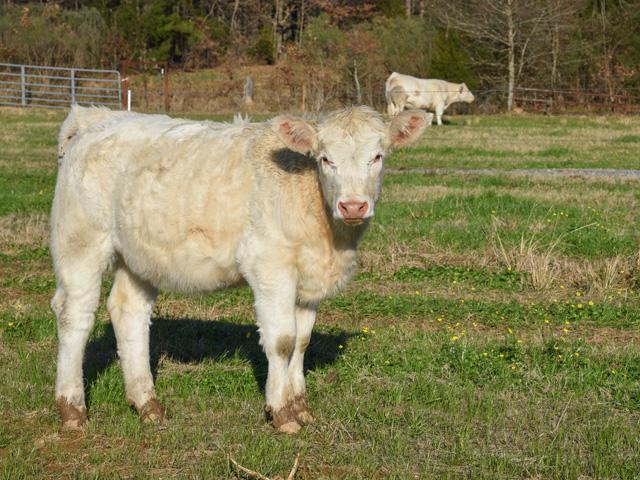Graze on a Wire
Nutrition Key for a Successful Fall-Calving Herd
Whether you're splitting a herd into fall and spring calvers, or switching to fall calving entirely, there's more to it than just putting the bulls in at a different time. It takes a whole new approach to be successful. And, as usual, it starts with the cows and nutrition.
"Make sure you have a plan for what to feed lactating cows," said Nicolas DiLorenzo, when asked about a shift to fall calving. The animal scientist at the University of Florida, North Florida Research and Education Center, explained the challenge in making the shift is that December will now be the peak of lactation for those fall calvers, and in many parts of the country there's nothing to graze that time of year.
That's a big deal. Why? DiLorenzo points out dry cows only require 7% to 8% crude protein and 45% TDN daily, whereas lactating cows need 10% to 12% crude protein and 50% TDN. It's a big difference. But is it worth it?
For Jimmy Ray Parish, the answer has always been yes. A forage agronomist by trade, Parish now works with Central Garden and Pet, and said he has long seen the advantage of fall calving but recognizes there is a feeding dilemma that can come with that program. The solution, he believes, is the use of a carefully orchestrated variety of forages. For him, the star is Texoma MaxQ II tall fescue, a novel endophyte variety that can provide up to nine and a half months of grazing.
Parish, who recently moved from a cattle operation in West Point, Mississippi, to Columbus, Mississippi, said he originally added the cool-season perennial by drilling it in a warm-season mix of bermudagrass, bahiagrass, and dallisgrass in October or November, when those forage are dormant. The last couple of years, he added more diversity to stands by seeding ryegrass.
It's a practice that shouldn't work. Theoretically, the fast-growing ryegrass should out-compete tall fescue. However, Parish wasn't afraid to experiment.
P[L1] D[0x0] M[300x250] OOP[F] ADUNIT[] T[]
"Much further north, the tall fescue will outgrow the ryegrass. Much further south, tall fescue won't grow. Here, the ryegrass and tall fescue grow in tandem. The ryegrass is more cold hardy and grows more in the winter, then the springtime growth curves really complement each other."
He added in the West Point area, he found the ryegrass would usually last until the third week of May or the first week of June. The tall fescue grew into June. Those high-quality forages peaked at a good time for fall calvers, hitting their elevated need for lactation. This has also been shown to be a great boost for those calves, which are just starting to graze on their own.
MOVING AND GRAZING
Even with a well-planned forage system, the Mississippi forage expert said there are times producers have to feed hay. Parish supplemented that by stockpiling excess growth from warm-season pastures for fall grazers.
"The last couple of weeks of August, we usually caught some rain, and we would put 50 units of nitrogen on the warm-season pastures," Parish explained. "We would also bushhog the rank, old growth to encourage new growth and get it up to 12% to 14% crude protein." By September, the tall fescue would be starting to grow, and the cows could go back on it.
"September is typically our driest month, but we still usually get a thick, robust stand of tall fescue," he said of the area. "If we graze it down really good, it will hold them until mid- to late-October."
After tall fescue is grazed down, Parish said cows typically go to stockpiled warm-season grasses. This past winter, cows at the West Point location were still grazing in mid-December.
"We used strip-grazing and moved the wire when they were out of grass," he recalled. "We got so much more out of the grass that way." He noted the main herd, which is around 30 cows, went on the stockpiled strip 25 feet wide and anywhere from 400 to 1,200 feet long. They moved every five or six days.
"That really worked well," he continued. "We could even do it with the open heifers. We got it grazed down so well, we got a beautiful stand when we no-tilled the ryegrass. By February or March, we'd have ryegrass grazing, and that's when the calves took off."
When he wasn't strip- or limit-grazing, Parish said he used frequent rotations to manage cows and forages.
"Polywire, in combination with good forage management, makes it work. Gallagher is our fencing choice. I love, love, love it. It is expensive, but you get what you pay for."
A PLAN FOR FALL CALVING
Even with careful forage management, Parish agreed with University of Florida's DiLorenzo that planning is needed for fall calving.
"You have to understand the (nutritional) needs of a fall-calving cow and that they may not come from the pasture alone. You've got to test your hay. You've got to know when the quality of the pasture has run out, and then you can balance your nutrients," he explained.
His objective is to meet the fertilizer needs of the warm-season grasses and get them up to 10% to 14% crude protein in the growing season. If they start dipping below 10% in July and August, when the cows are in their last trimester of pregnancy, Parish likes to put out lick tubs. By November, when strip-grazing picks up, forages decline into the 8% protein range. Once again, he said lick tubs are a good way to supplement.
Lastly, Parish stressed it's important to know nutritional levels of forages to keep the herd in good condition. "I'm a forage agronomist," he said. "I've got a good understanding of the quality of stockpiled forages. With people who aren't as familiar, they need to take forage samples."
(c) Copyright 2022 DTN, LLC. All rights reserved.






